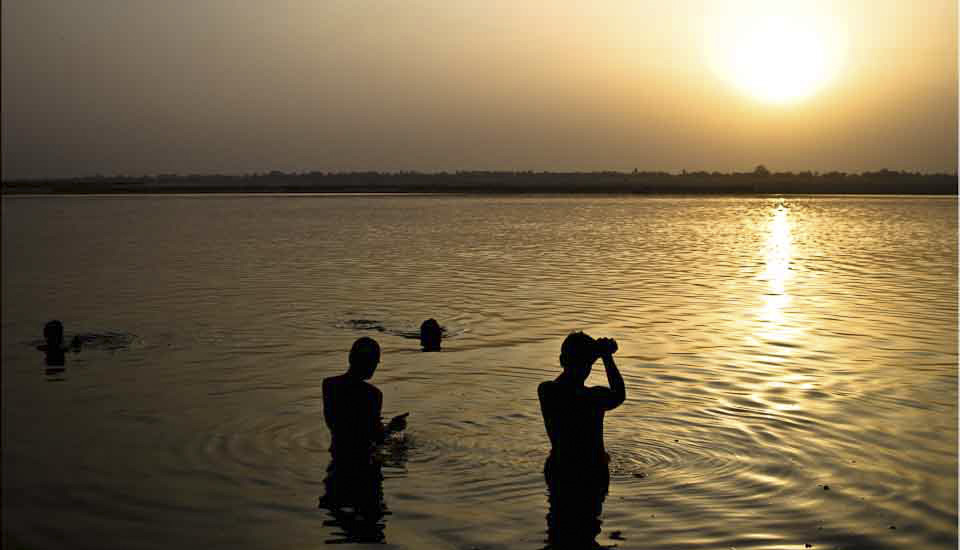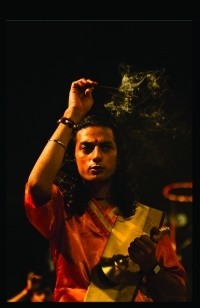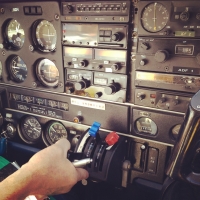.jpg)
Those Iconic Fishing Nets!
You could be nowhere else in the world: those distinctive nets, made of teak wood and bamboo poles, suspended over the Laccadive Sea are emblematic of Kochi (Cochin) in the Southwest Indian state of Kerala.
I loved the unique charm of Fort Kochi (Cochin).
Kochi, the financial and commercial capital of Kerala, is a major port city on the Malabar Coast, home to shipping, industry, and the only international marina in India. Called the Queen of the Arabian Sea, with its commanding location on the southwest coast of the Indian peninsula, Kochi has long been a strategic maritime centre, boasting a rich and remarkably cosmopolitan history.
Kochi and ports to the north of it were known to mariners from ancient times and were the centre of the Indian spice trade for many centuries. However, the other ports were destroyed by massive floods in 1341, leading to Kochi’s dominance.
The Arab, Chinese, and European merchants who visited and lived here left their mark in the historic streets around the old waterfront area now known as Fort Kochi. This charming seaside district, in the vicinity of the ruins of Fort Emmanuel (Fort Manuel), is known for its Dutch, Portuguese, and British colonial architecture – some dating to the 15- and 1600s.
Even the magnificent heritage hotel I was staying in was originally built by the Dutch in the 1860s (see: Fort Kochi Heritage Hotel). Although it is upgraded to include modern comforts, it still boasts Portuguese, Dutch, and British influences.
I was travelling with a small group. We had arrived in Fort Kochi the evening before, in time for a piquant South Indian meal followed by a traditional Kathakali dance performance (see: An Introduction to Kathakali).
This morning saw us in our walking shoes, ready to explore the streets of the old city.
Naturally, our first stop was on the waterfront, to see the cheenavala – the unique fishing nets introduced to Kochi in the 14th century by the Chinese. Still in use today, these lift nets made of teak and bamboo are a symbol of the city and a popular tourist drawcard.
.jpg)
A Busy Waterfront
This is India, so I’m not surprised by the heat and trash and chaos on the Fort Kochi waterfront.
.jpg)
Looking After the Boats
The waterfront is crowded with boats and people working them.

Ships on the Horizon
Cattle egrets (Ardea coromanda) rest on poles in the harbour, while rusty working boats chug in through the sea haze.

Vasco de Gama Beach

Chinese Fishing Nets – Cheenavala
These heavy nets are used throughout southern China, but Kerala is the only place you will see them in India.

Fisherman
Each of the lift nets is operated by four to six fishermen; they are happy to pause the heavy work for a chat.

A Colourful Boat on the Waters

Steam Boilers in Kochi Dry Dock
The rusty boilers on display on Vasco de Gama Beach are a reminder of the city’s maritime industry. They were used for twenty years – starting from 1956 – to power the cranes working the dry docks.

Church of Saint Francis
Our next stop was at one of India’s oldest European churches. St. Francis was originally built in 1503 by Portuguese Franciscan friars. The Portuguese explorer Vasco da Gama, who died in the city in 1524, was originally interred here.

Lucas inside St. Francis
In the relatively simple interior, our guide gives us a rundown of the history and architecture of the reconditioned building. When the Protestant Dutch captured Kochi from the Portuguese in 1663, they demolished all the Roman Catholic churches except this one – which they converted.

Musicians in the Street
Back in the streets, a Hindu festival is taking place.

Blowing the Kombu and Horns
These large curved brass horns have been used in South India since about the 6th century. They are commonly played – along with other wind instruments and the various drums – during Hindu rituals, and the effect is deafening.

Young Hindu Priest

Temple Elephant
Although the practice is coming under scrutiny these days, many Hindu temples still have one or more elephants – believed to be sacred reincarnations or representations of Lord Ganesha. During festivals, the elephants – in their ornate golden headwear – typically make a neighbourhood circuit.

Priests
While the mahout walks below, two priests ride the elephant through the streets.

Mattancherry Palace
Our next stop was at a small palace. Built in traditional Kerala style: a quadrangular structure with a courtyard in the middle, the building itself is fairly unprepossessing from the outside.

Rooftops from the Palace
Commonly called the Dutch Palace, the palace was actually constructed by the Portuguese around 1545. It was built as a gift for the Maharaja of Kochi, to appease him after they plundered a nearby temple.

Edakochi Kayal from a Palace Window

Artefacts
The palace is known for its delicate woodwork and its many murals depicting royal life. It also houses some historical items.

Mattancherry from a Palace Window
I was most taken by the window seats – all graced with beautiful views.

Cochin Paradesi Synagogue
Our last stop was in Mattancherry Jew Town – named for the Jewish community who settled in Kochi from as early as the 12th century. The first were known as Malabar Jews; they claimed direct lineage to King Solomon. Later, Sephardi Jews – who became known as Paradesi Jews (or Foreign Jews) – made their way to Kochi after their 1492 expulsion from the Iberian Peninsula.

Tiles in the Synagogue
The synagogue features hundreds of 18th-century hand-painted Chinese porcelain tiles, with no two exactly the same. (iPhone12Pro)

A Pillar and a Prayer
“Hear Israel, O our God …” (iPhone12Pro)

Jew Street
Back outside, the street is full of fascinating shops to explore.

Perfumes and Powders
These are the sorts of talc powders that are used to decorate doorsteps – or elephants. (iPhone12Pro)

Craftswoman
I spent some time chatting with this woman, and admiring her fine needlework. She learned her craft as an apprentice to Sarah, the old woman who became the last remaining Jewish resident of this district.
Fort Kochi is truly a rich and remarkably cosmopolitan historic town – it’s no wonder ranked it highly in National Geographic’s Top 25 Tourist Destinations To Explore In 2020 and continues to attract tourists from India and around the world.
 I’d go back!
I’d go back!
Photos: 31January2023






























.png)

